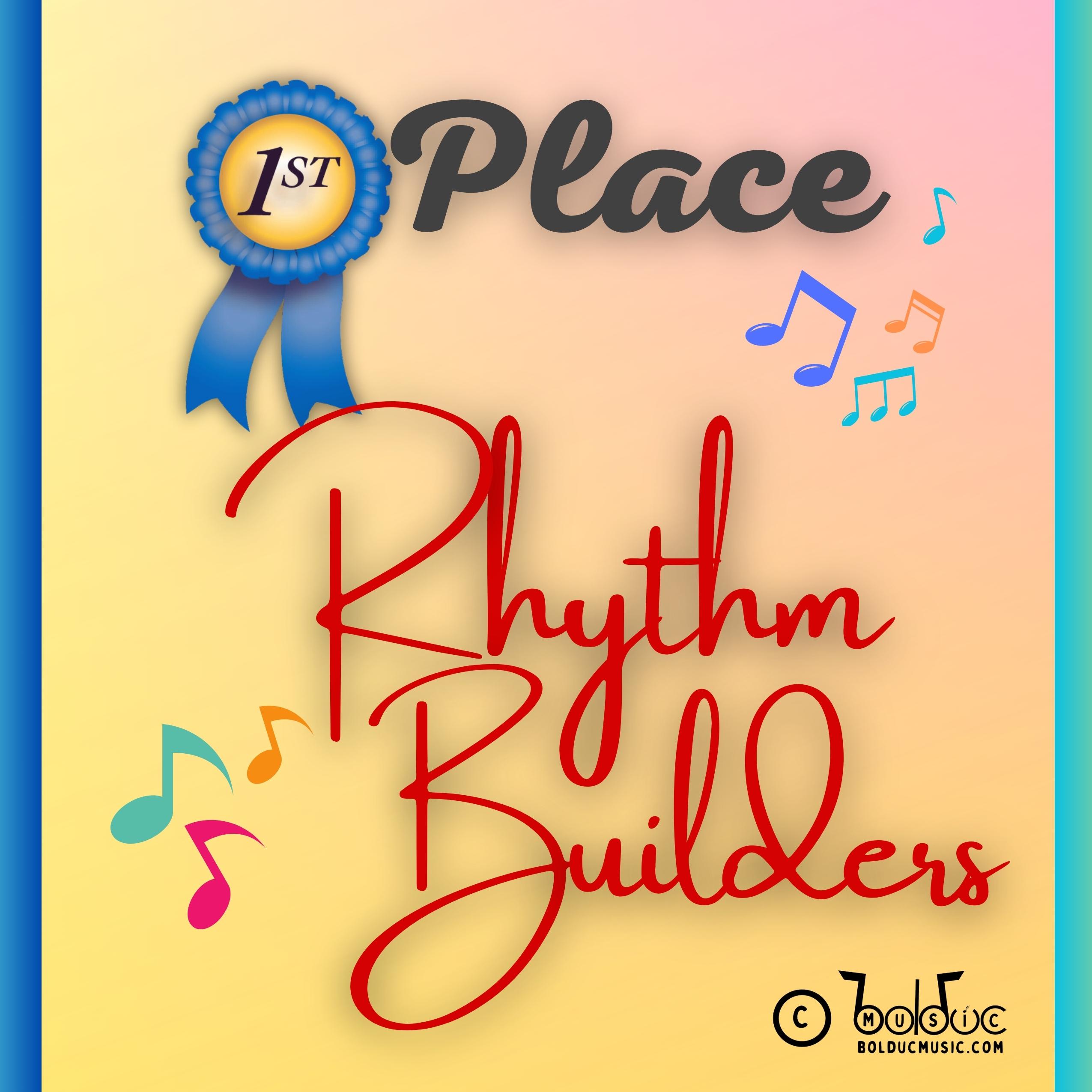Welcome to a tried and true way to help musicians understand how to use subdivisions to decipher rhythms more consistently. This has been used for years in instrumental rehearsals and music classrooms and is proven to help students read rhythms with confidence using multiple subdivisions and meters. As an instrumental teacher for almost 40 years, the one constant has been that many/most students don’t maintain an internal sense of subdivisions as they perform, particularly when sight reading and learning new material. This system shows them how and reinforces rhythmic concepts visually. It works!
Beyond reinforcing the internalization of subdivisions to decode rhythms in real time, Rhythm Builders supports the ‘many ways of learning’ approach for those who have struggled with typical music methods. There are many students who simply look at and interpret things differently. The traditional approach of count, clap, and play just doesn’t work for every student – THIS system doesn’t work for every student, but it’s a useful tool that certainly helps. Many students have expressed that they never ‘got’ sight reading rhythms until they were introduced to this system. Those successes led to the Rhythm Builders approach presented here.
1st Place Rhythm Builders – Ensemble worksheets to improve rhythm comprehension.
Now available through this site!
Rhythm Builders is broken into 4 useful sections, starting with this ‘Teacher Note’ section. This is followed by the ‘overhead’ files to be used in class (subdivision templates); rhythmic dictation worksheets that can be used as students develop fluency by writing and processing what they hear and see; and activity/assessment sheets in several forms. ‘Rhythms’ are introduced starting with single measures using common time groups (duple and triple) that focus on 8th note subdivisions. These are followed by 16th note subdivision studies allowing for more syncopated possibilities, and finally compound meter examples using 8th note triplet groups.
Rhythm Builders is easy and useful because there are NO rhythms! Teachers determine the rhythms to introduce and study, and customize them to the abilities and needs of their students. The subdivision templates offer unlimited possibilities from beginner to advanced. As a band director for many years, that was the most valuable part of this teaching strategy. Customizing’ on the fly’ to reinforce skills and proficiency in each class was invaluable.
In the classroom these worksheets, whether on an interactive board in front of the class or as paper handouts, are regular ‘do-now’s’ or activators as well as exit tickets in music classes. Put a ‘rhythm of the day’ on the board as students enter and have them circle the subdivisions or write the rhythm. Using tricky rhythms from concert music being worked on is a common occurrence in my classroom. This allows teachers to track progress daily and adjust the templates to address gaps in achievement.
Rhythm Builders encourages students to learn the rules of music notation by practicing music (note) writing skills (kids don’t do enough of that anymore)! Ties, dots, rests, flags and beams – all become part of the discussion. I have also used these sheets to encourage students to invent their own rhythms, metric groupings, and conducting the patterns presented. There are opportunities to make math connections by exploring patterns within groups (2, 3, 4, 5, 6, 7, 9, 12, etc.) or exploring mixed meters and advanced groupings. These templates support however simple or complex you want to focus your rhythmic studies.

Rhythm Builders has also been used by teachers as part of their Professional Goals. As teachers create their own sequential rhythm studies using these templates, progress can be planned and customized using the many templates available in this set. You can prove that students improved! (Rhythms are not subjective – there are right and wrong answers – providing data on growth. Plus students can grade their own work. The ability to add beat markers, written subdivisions, etc. allows teachers to differentiate instruction for students who may need modifications or visual cues as shown in the Teacher Guide.
There are many methods to teach rhythm – I have tried many. These sheets are meant to be an additional approach to counting, conversation solfege, or any other rhythmic methods adhered to in current practice. I hope you find them to be a useful tool. – jeff@bolducmusic.com
I didn’t invent this! I did design the sheets and supporting information.
I’m hoping that you find value in these and also consider buying my method books available through this site. Like the other Band Builder products, you will get the master set that can be copied as needed in your school. If other teachers are interested, please direct them to bolducmusic.com to purchase/download their own set. If you change schools, please download a new set for those students. Feedback is always welcome! As you start using these sheets, I’m sure new uses and potentially missing meters will reveal themselves. Please email me and let me know about your successes! Better yet, send me a testimonial to use on the site. -Jeff
-
Only $15.00 for the whole set!
-
A link to the full pdf set will be part of your receipt —>
🎶 Bolduc Music is the ‘1st Place’ to shop for band curriculum that is sensible, flexible, challenging, economical, and fun! You also can find our products at: Teacher-Pay-Teachers. Follow us on Pinterest.


